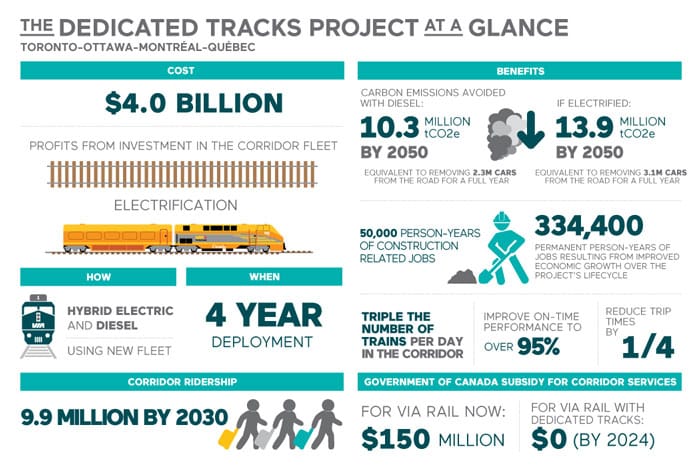kEiThZ
Superstar
I vehemently disagree with Greg Gormick's comments.
Yes. The Toronto-Montreal market is important. But it's ridiculous to separate that from Toronto-Ottawa when considering a rail project. Which is why previous proposals for high speed rail have not. Going through Ottawa does not even add 100 km to the total distance. If we had decent speed, that would not add more than 30 mins.
I am going to argue that VIA is being overly optimistic and that Toronto-Ottawa will be 3 hrs. And that Toronto-Montreal will be 4.25-4.5 hrs (as opposed to 3:45 pledged). If that's the case, the project is still worthwhile. It would divert most bus traffic on the Toronto-Montreal route. Most buses are 5.75-6.5 hrs and prices are from $40-$60. It would gain modal share against driving too, since it's faster than driving. And for Ottawa, it would actually reduce a ton of flying, even with a 3 hr trip time.
What's needed here is some kind of hybrid proposal. Put in the extra billion or two and boost the speed enough to get Toronto-Montreal through Ottawa down to about 3 hrs. With the right fares, that would actually put a dent in Toronto-Montreal flights.
And on that note, this is a debate sorely needed in Canada. When it comes to carbon emissions and climate change, cutting aviation emissions in the Quebec-Windsor corridor is actually low hanging fruit. That alone would justify serious investment in HSR and public transit. The corridor has density unlike anywhere else in Canada. HSR would be a massive economic booster while actually cutting emissions at the same time.
Yet, as an investment the proposal will never really pan out. With HFR, the sales pitch seems to be $150 million in annual subsidies for corridor service can be removed. With interest and presuming subsidies increasing with time, it would take 40-50 years to justify HFR. If it's looked at as an investment to improve connectivity and reduce emissions, than the justification improves. And the government needs to get on with making that case.
Yes. The Toronto-Montreal market is important. But it's ridiculous to separate that from Toronto-Ottawa when considering a rail project. Which is why previous proposals for high speed rail have not. Going through Ottawa does not even add 100 km to the total distance. If we had decent speed, that would not add more than 30 mins.
I am going to argue that VIA is being overly optimistic and that Toronto-Ottawa will be 3 hrs. And that Toronto-Montreal will be 4.25-4.5 hrs (as opposed to 3:45 pledged). If that's the case, the project is still worthwhile. It would divert most bus traffic on the Toronto-Montreal route. Most buses are 5.75-6.5 hrs and prices are from $40-$60. It would gain modal share against driving too, since it's faster than driving. And for Ottawa, it would actually reduce a ton of flying, even with a 3 hr trip time.
What's needed here is some kind of hybrid proposal. Put in the extra billion or two and boost the speed enough to get Toronto-Montreal through Ottawa down to about 3 hrs. With the right fares, that would actually put a dent in Toronto-Montreal flights.
And on that note, this is a debate sorely needed in Canada. When it comes to carbon emissions and climate change, cutting aviation emissions in the Quebec-Windsor corridor is actually low hanging fruit. That alone would justify serious investment in HSR and public transit. The corridor has density unlike anywhere else in Canada. HSR would be a massive economic booster while actually cutting emissions at the same time.
Yet, as an investment the proposal will never really pan out. With HFR, the sales pitch seems to be $150 million in annual subsidies for corridor service can be removed. With interest and presuming subsidies increasing with time, it would take 40-50 years to justify HFR. If it's looked at as an investment to improve connectivity and reduce emissions, than the justification improves. And the government needs to get on with making that case.








